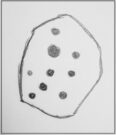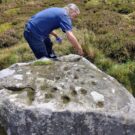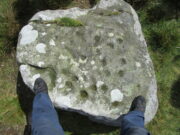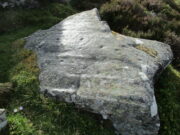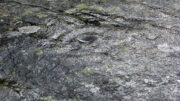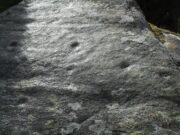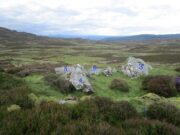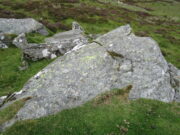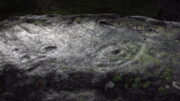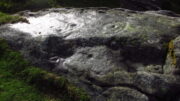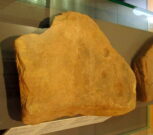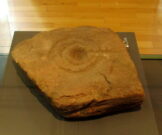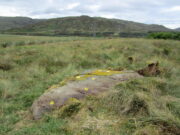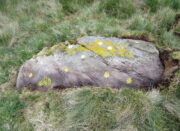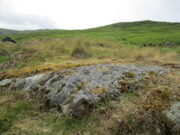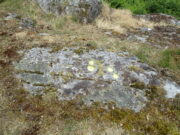Cup-and-Ring Stone: OS Grid Reference – SE 15767 41195
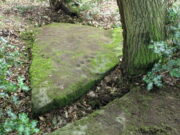
Through Baildon town centre, take the road onto Baildon Moor, but instead of turning left up to Baildon Hill, keep straight on the Hawksworth road and 100 yards along you’ll see a car-park is on the right-hand side, just before you start going downhill. From here, walk down the road a couple of hundred yards until you see the footpath (keep your eyes peeled!) turning right towards The Whitehouse, and from there take the footpath dead straight down to the woods below. Cross the stream, turn right, then immediately left uphill by the wall-side. Shortly before reaching the top you’ll see a large triangular sloping slab of rock with a tree at its top. That’s it! Alternatively you can come via Hawksworth village by following the directions to the Hawksworth Spring (02) carving, which is just 10 yards east of this one. Easy!
Archaeology & History
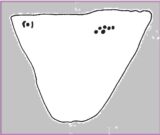
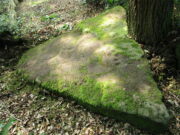
This minimalist design is best seen from above the adjacent rock which, in times gone by, was attached to this very same stone. The main aspect of the carving are the two short rows of three cups, running almost alongside each other, in a likeness which my compatriot Liz Sykes said “was like some animal footprints.” It’s not a bad description to be honest (this same motif is found on a companion petroglyph just a few yards to the east: the Hawksworth Spring [2] stone). If you follow the direction of the “animal tracks” to the western end of the stone, you’ll see another isolated cup with a faint incomplete ring around it. You can just make it out on the photo to the right. Another single cup-mark seems apparent two-thirds the way down the stone.
References:
- Hedges, John (ed.), The Carved Rocks on Rombalds Moor, WYMCC: Wakefield 1986.
Acknowledgements: Huge thanks to Liz Sykes for her renowned cleaning skills!
© Paul Bennett, The Northern Antiquarian
